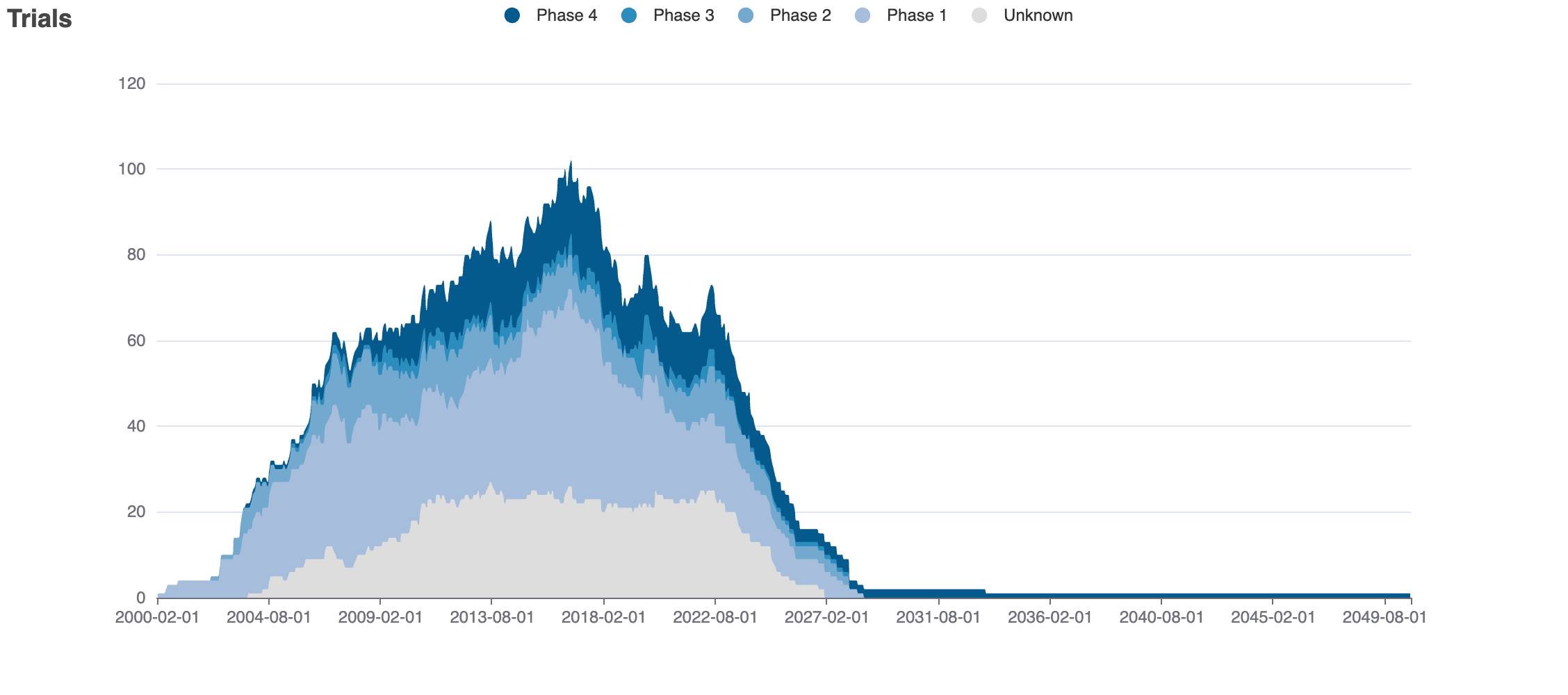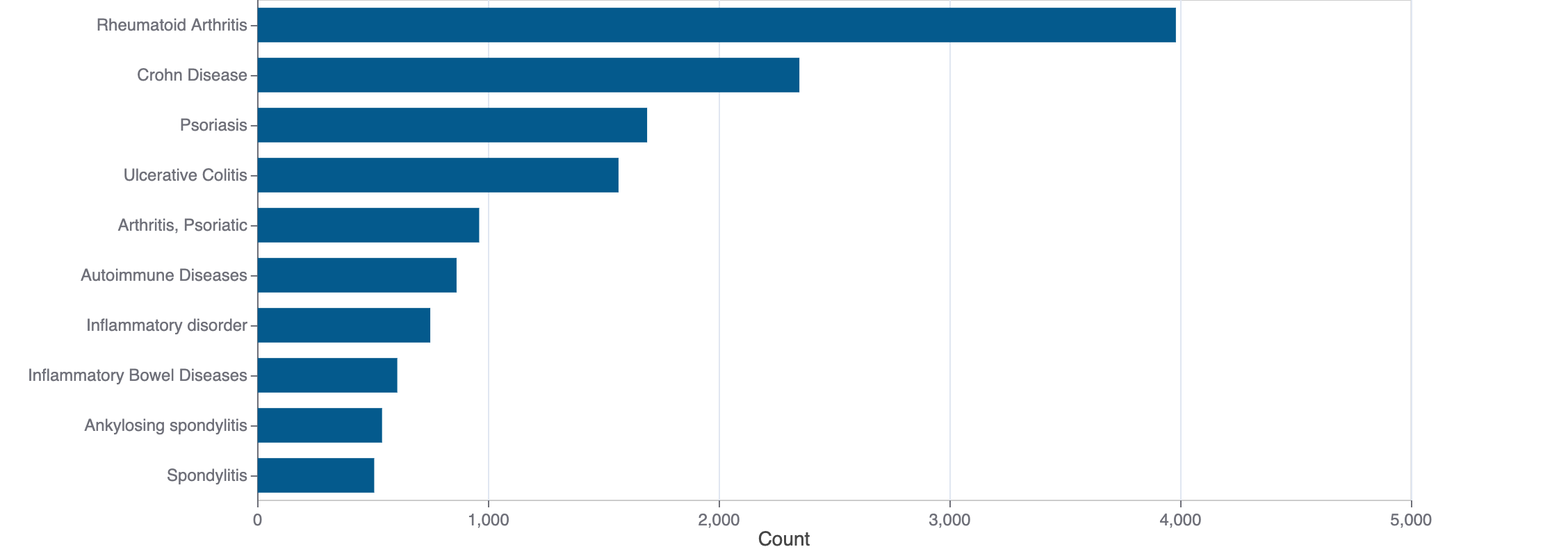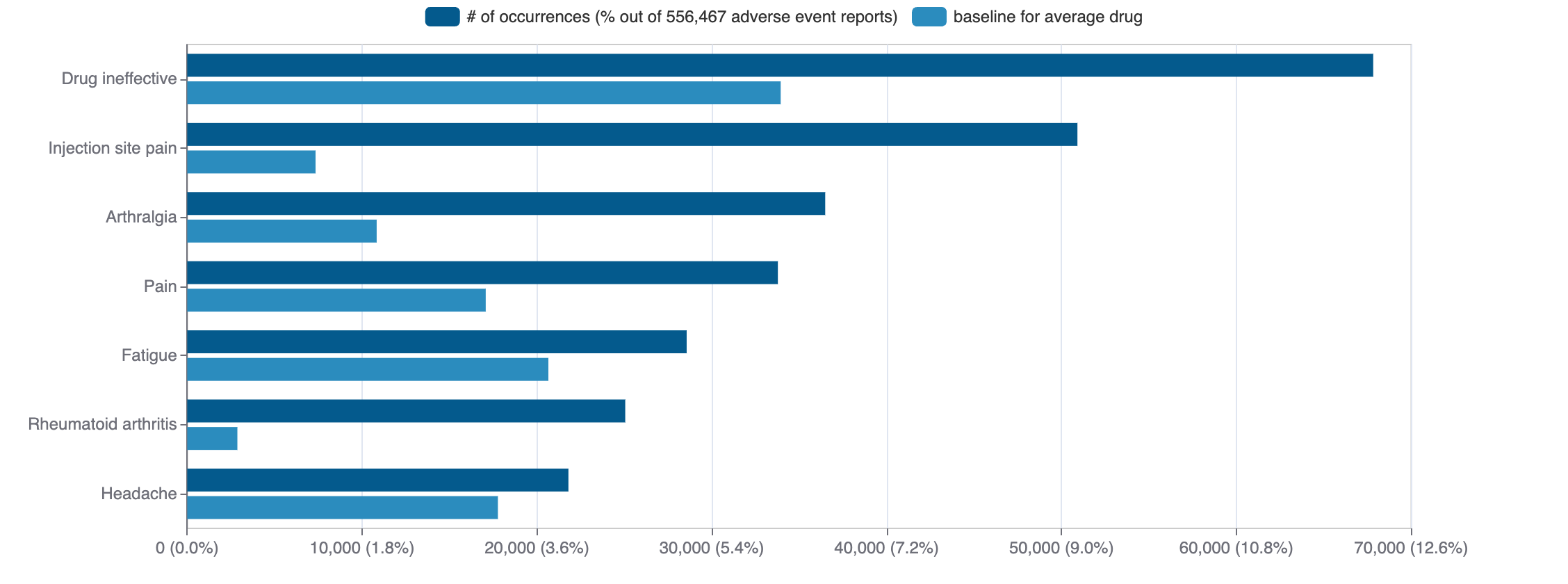Cyanokit(hydroxocobalamin)
Cyanokit (hydroxocobalamin) is a small molecule pharmaceutical. Hydroxocobalamin was first approved as Hydroxocobalamin on 1982-01-01. It is used to treat alcoholic neuropathy, diabetic neuropathies, multiple sclerosis, pernicious anemia, and poisoning in the USA. It has been approved in Europe to treat poisoning.
Download report
Favorite
Commercial
Trade Name
FDA
EMA
Cyanokit (generic drugs available since 1982-01-01, discontinued: Alpharedisol, Hydroxomin)
Drug Products
FDA
EMA
New Drug Application (NDA)
New Drug Application (NDA)
Abbreviated New Drug Application (ANDA)
Abbreviated New Drug Application (ANDA)
Hydroxocobalamin
Tradename | Company | Number | Date | Products |
|---|---|---|---|---|
| CYANOKIT | BTG INTL | N-022041 RX | 2011-04-08 | 1 products, RLD, RS |
Show 1 discontinued
Labels
FDA
EMA
Brand Name | Status | Last Update |
|---|---|---|
| cyanokit | New Drug Application | 2021-05-31 |
Indications
FDA
EMA
Indication | Ontology | MeSH | ICD-10 |
|---|---|---|---|
| alcoholic neuropathy | EFO_1000803 | D020269 | G62.1 |
| diabetic neuropathies | EFO_1000783 | D003929 | — |
| multiple sclerosis | EFO_0003885 | D009103 | G35 |
| pernicious anemia | EFO_0005576 | D000752 | D51.0 |
| poisoning | EFO_0008546 | D011041 | T65.91 |
Agency Specific
FDA
EMA
No data
Patent Expiration
No data
ATC Codes
B: Blood and blood forming organ drugs
— B03: Antianemic preparations
— B03B: Vitamin b12 and folic acid
— B03BA: Vitamin b12 (cyanocobalamin and analogues)
— B03BA03: Hydroxocobalamin
— B03BA53: Hydroxocobalamin, combinations
V: Various drug classes in atc
— V03: All other therapeutic products
— V03A: All other therapeutic products
— V03AB: Antidotes
— V03AB33: Hydroxocobalamin
HCPCS
No data
Clinical
Clinical Trials
193 clinical trials
View more details

Mock data
Subscribe for the real data
Subscribe for the real data
Indications Phases 4
Indication | MeSH | Ontology | ICD-10 | Ph 1 | Ph 2 | Ph 3 | Ph 4 | Other | Total |
|---|---|---|---|---|---|---|---|---|---|
| Vitamin b 12 deficiency | D014806 | EFO_0000734 | E53.8 | 2 | 2 | 2 | 3 | 15 | 22 |
| Anemia | D000740 | EFO_0004272 | D64.9 | — | 3 | 2 | 4 | 5 | 12 |
| Cardiovascular diseases | D002318 | EFO_0000319 | I98 | — | 2 | 1 | 2 | — | 5 |
| Stroke | D020521 | EFO_0000712 | I63.9 | — | — | 2 | 1 | 2 | 5 |
| Myocardial infarction | D009203 | EFO_0000612 | I21 | — | 1 | 2 | 1 | — | 4 |
| Schizophrenia | D012559 | EFO_0000692 | F20 | — | 1 | 1 | 2 | 1 | 4 |
| Neoplasms | D009369 | C80 | — | — | 1 | 2 | — | 3 | |
| Vasoplegia | D056987 | — | 2 | — | 1 | — | 3 | ||
| Cognitive dysfunction | D060825 | G31.84 | 1 | — | — | 1 | 1 | 3 | |
| Iron-deficiency anemia | D018798 | HP_0001891 | D50 | — | — | — | 1 | 2 | 3 |
Show 16 more
Indications Phases 3
Indication | MeSH | Ontology | ICD-10 | Ph 1 | Ph 2 | Ph 3 | Ph 4 | Other | Total |
|---|---|---|---|---|---|---|---|---|---|
| Non-small-cell lung carcinoma | D002289 | 1 | 8 | 5 | — | 1 | 13 | ||
| Coronary artery disease | D003324 | I25.1 | — | 2 | 1 | — | 1 | 4 | |
| T-cell lymphoma peripheral | D016411 | C84.9 | 2 | 3 | 1 | — | — | 4 | |
| Autistic disorder | D001321 | EFO_0003758 | F84.0 | — | 2 | 2 | — | 2 | 4 |
| Covid-19 | D000086382 | U07.1 | — | 1 | 1 | — | 1 | 3 | |
| Lung neoplasms | D008175 | C34.90 | — | 3 | 1 | — | — | 3 | |
| Type 2 diabetes mellitus | D003924 | EFO_0001360 | E11 | — | 1 | 1 | — | 2 | 3 |
| Urinary bladder neoplasms | D001749 | C67 | — | 1 | 1 | — | — | 2 | |
| Transitional cell carcinoma | D002295 | — | 1 | 1 | — | — | 2 | ||
| Chronic kidney failure | D007676 | EFO_0003884 | N18.6 | — | — | 1 | — | 1 | 2 |
Show 19 more
Indications Phases 2
Indication | MeSH | Ontology | ICD-10 | Ph 1 | Ph 2 | Ph 3 | Ph 4 | Other | Total |
|---|---|---|---|---|---|---|---|---|---|
| Diabetic neuropathies | D003929 | EFO_1000783 | — | 1 | — | — | 4 | 5 | |
| Breast neoplasms | D001943 | EFO_0003869 | C50 | 1 | 2 | — | — | 1 | 4 |
| Systemic lupus erythematosus | D008180 | EFO_0002690 | M32 | — | 1 | — | — | 1 | 2 |
| Head and neck neoplasms | D006258 | — | 2 | — | — | — | 2 | ||
| Stomatitis | D013280 | EFO_1001904 | K12.1 | — | 2 | — | — | — | 2 |
| Nasopharyngeal neoplasms | D009303 | — | 2 | — | — | — | 2 | ||
| B-cell lymphoma | D016393 | 1 | 2 | — | — | — | 2 | ||
| Coronary disease | D003327 | — | 1 | — | — | — | 1 | ||
| Myocardial ischemia | D017202 | EFO_1001375 | I20-I25 | — | 1 | — | — | — | 1 |
| Heart diseases | D006331 | EFO_0003777 | I51.9 | — | 1 | — | — | — | 1 |
Show 19 more
Indications Phases 1
Indication | MeSH | Ontology | ICD-10 | Ph 1 | Ph 2 | Ph 3 | Ph 4 | Other | Total |
|---|---|---|---|---|---|---|---|---|---|
| Carpal tunnel syndrome | D002349 | EFO_0004143 | G56.0 | 1 | — | — | — | 2 | 3 |
| T-cell lymphoma cutaneous | D016410 | C84.A | 2 | — | — | — | — | 2 | |
| Obesity | D009765 | EFO_0001073 | E66.9 | 1 | — | — | — | 1 | 2 |
| Colorectal neoplasms | D015179 | 1 | — | — | — | — | 1 | ||
| Pancreatic ductal carcinoma | D021441 | 1 | — | — | — | — | 1 | ||
| Pancreatic neoplasms | D010190 | EFO_0003860 | C25 | 1 | — | — | — | — | 1 |
| Triple negative breast neoplasms | D064726 | 1 | — | — | — | — | 1 | ||
| Adenocarcinoma | D000230 | 1 | — | — | — | — | 1 | ||
| Sezary syndrome | D012751 | C84.1 | 1 | — | — | — | — | 1 | |
| Primary cutaneous anaplastic large cell lymphoma | D054446 | C86.6 | 1 | — | — | — | — | 1 |
Show 4 more
Indications Without Phase
Indication | MeSH | Ontology | ICD-10 | Ph 1 | Ph 2 | Ph 3 | Ph 4 | Other | Total |
|---|---|---|---|---|---|---|---|---|---|
| Healthy volunteers/patients | — | — | — | — | — | 3 | 3 | ||
| Diabetes mellitus | D003920 | EFO_0000400 | E08-E13 | — | — | — | — | 2 | 2 |
| Hyperhomocysteinemia | D020138 | — | — | — | — | 2 | 2 | ||
| Transient ischemic attack | D002546 | EFO_0003764 | G45.9 | — | — | — | — | 2 | 2 |
| Aphthous stomatitis | D013281 | EFO_0003938 | K12.0 | — | — | — | — | 2 | 2 |
| Pregnancy | D011247 | EFO_0002950 | Z33.1 | — | — | — | — | 2 | 2 |
| Diabetes complications | D048909 | — | — | — | — | 1 | 1 | ||
| Diabetic foot | D017719 | EFO_1001459 | — | — | — | — | 1 | 1 | |
| Delirium | D003693 | R41.0 | — | — | — | — | 1 | 1 | |
| Neutropenia | D009503 | D70 | — | — | — | — | 1 | 1 |
Show 32 more
Epidemiology
Epidemiological information for investigational and approved indications
View more details
Drug
General
| Drug common name | HYDROXOCOBALAMIN |
| INN | hydroxocobalamin |
| Description | Hydroxocobalamin, also known as vitamin B12a and hydroxycobalamin, is a vitamin found in food and used as a dietary supplement. As a supplement it is used to treat vitamin B12 deficiency including pernicious anemia. Other uses include treatment for cyanide poisoning, Leber's optic atrophy, and toxic amblyopia. It is given by injection into a muscle or vein.
|
| Classification | Small molecule |
| Drug class | — |
| Image (chem structure or protein) | |
| Structure (InChI/SMILES or Protein Sequence) | C/C1=C2/N=C(/C=C3\N=C(/C(C)=C4\N([Co+]O)[C@H]([C@H](CC(N)=O)[C@@]4(C)CCC(=O)NC[C@@H](C)OP(=O)([O-])O[C@@H]4[C@@H](CO)O[C@H](n5cnc6cc(C)c(C)cc65)[C@@H]4O)[C@]4(C)N=C1[C@@H](CCC(N)=O)[C@]4(C)CC(N)=O)[C@@H](CCC(N)=O)C3(C)C)[C@@H](CCC(N)=O)[C@]2(C)CC(N)=O |
Identifiers
| PDB | — |
| CAS-ID | 13422-51-0 |
| RxCUI | 5514 |
| ChEMBL ID | CHEMBL2103737 |
| ChEBI ID | 27786 |
| PubChem CID | 44475014 |
| DrugBank | DB00200 |
| UNII ID | Q40X8H422O (ChemIDplus, GSRS) |
Target
Agency Approved
No data
Alternate
No data
Variants
Clinical Variant
No data
Financial
No data
Trends
PubMed Central
Top Terms for Disease or Syndrome:

Mock data
Subscribe for the real data
Subscribe for the real data
Additional graphs summarizing 1,554 documents
View more details
Safety
Black-box Warning
No Black-box warning
Adverse Events
Top Adverse Reactions

Mock data
Subscribe for the real data
Subscribe for the real data
135,603 adverse events reported
View more details
Premium feature
Learn more about premium features at pharmakb.com
Learn more
